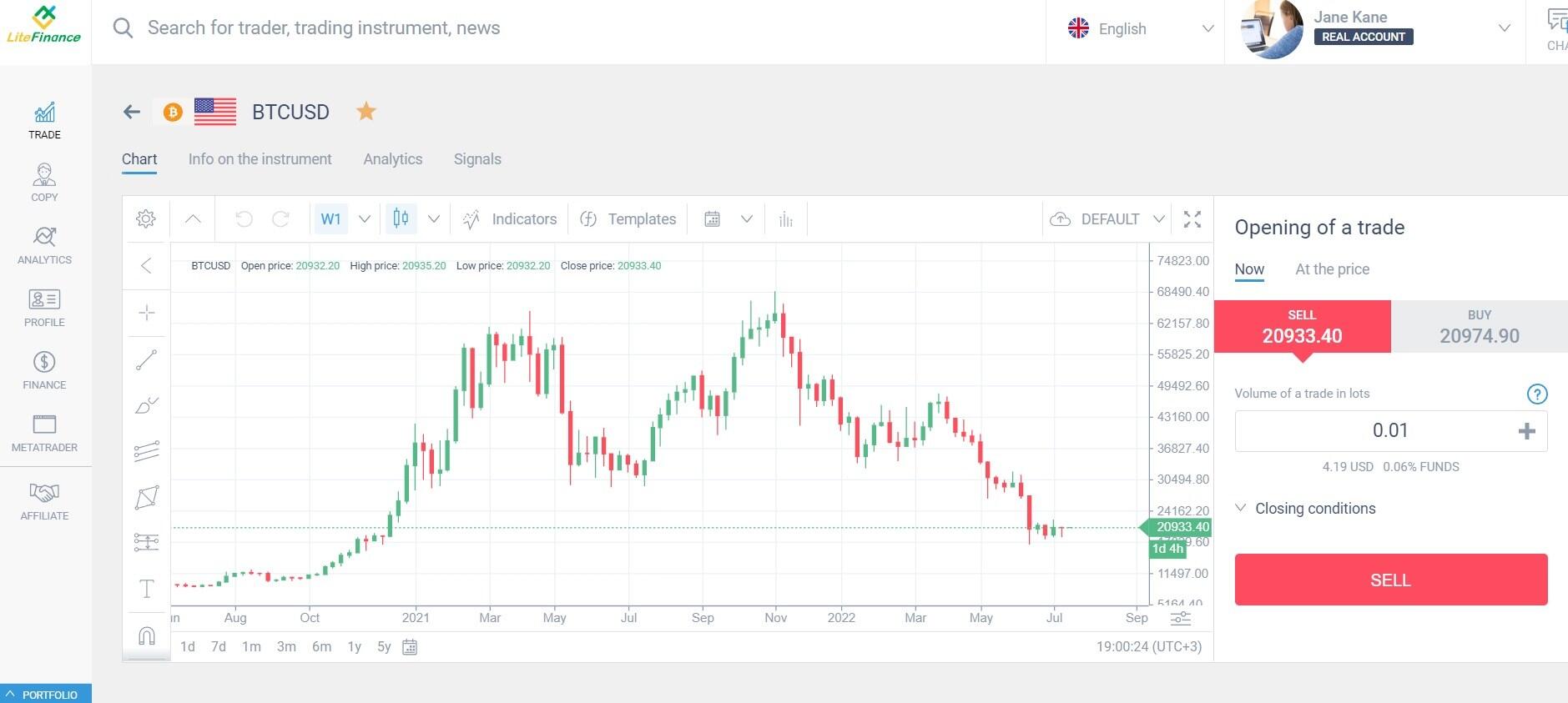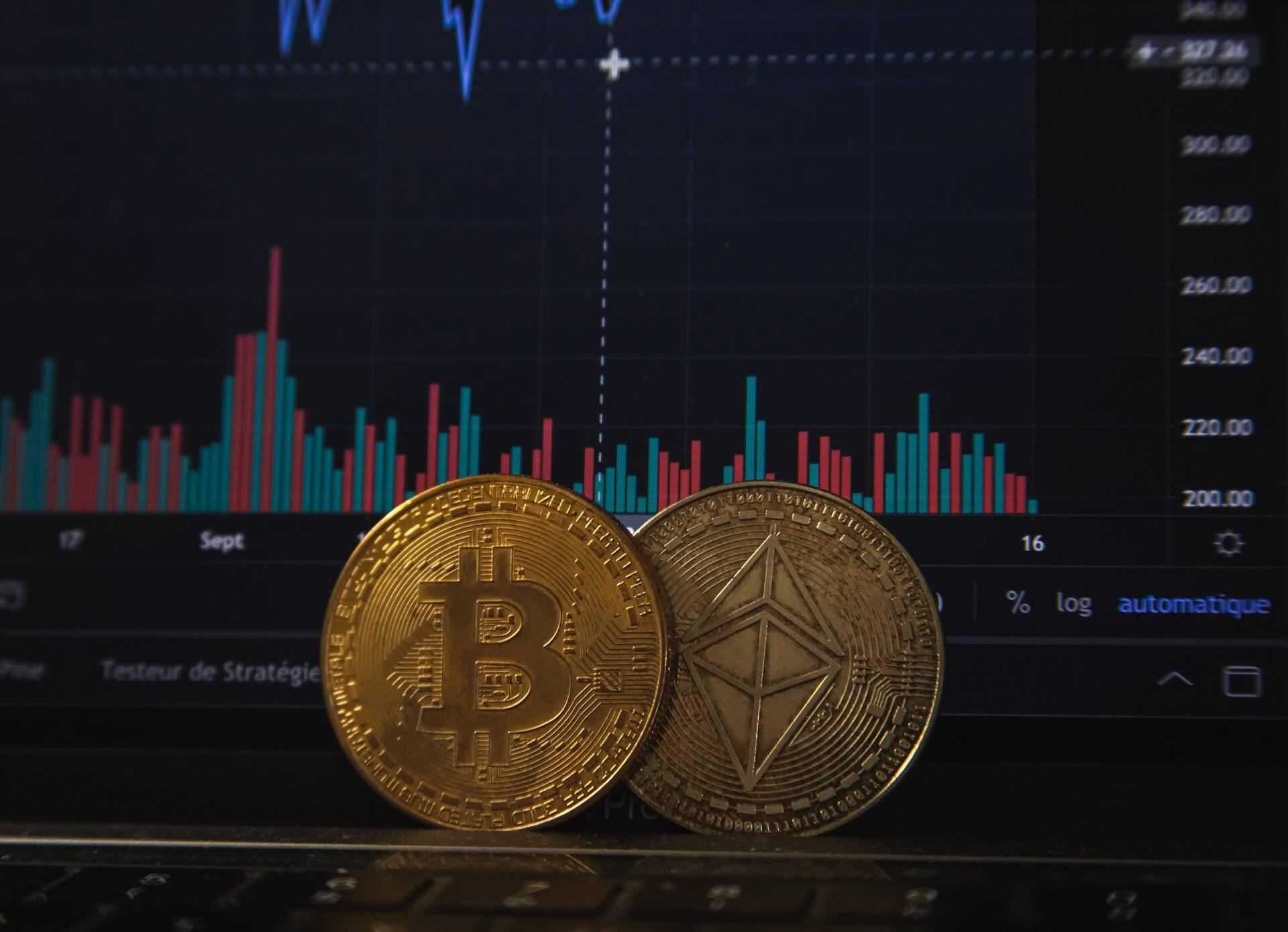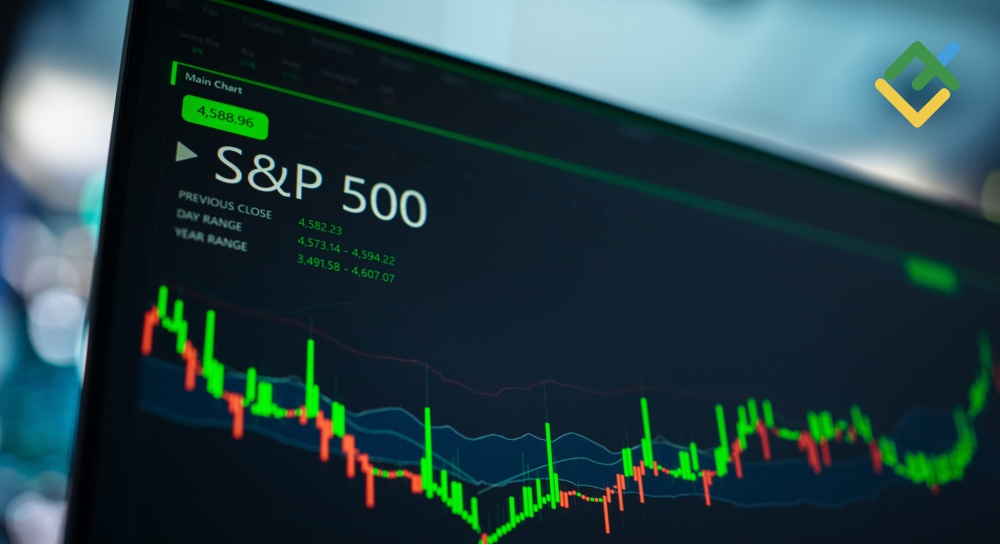
Bitcoin is the most traded and most popular cryptocurrency so far. Despite some ups and downs in its price, it remains the largest crypto by market capitalization, worth about $395 billion. Although when launched in 2009, BTC was often considered a scam, nowadays more and more investors are deciding to add this financial instrument to their investment portfolio.
In this article, let’s have a closer look at this digital currency, how it was created, Bitcoin’s distinguishing features, its advantages, risks, and everything else you need to take into account to decide if it is a good investment for you.
The article covers the following subjects:
History of Bitcoin (BTC)
Bitcoin was created in 2008 by Satoshi Nakamoto. The real identity of this person (or group of people) remains unknown. All we know is this pseudonym.
The idea to create Bitcoin came after the global financial crisis in 2008 when people started losing their trust in banks and other financial institutions. The main goal was to create a decentralized currency that would be independent of any central authority or intermediaries. As a result, in 2008 Bitcoin was introduced to the public and in 2009 its first-ever block (known as the Genesis block) was mined.
When it comes to the Bitcoin price, it was always associated with a high level of volatility. However, despite significant value fluctuations throughout its history, BTC has soared dramatically since 2009, when its price was slightly over $0. In 2011, it entered its first bullish trend, reaching the value of $30. In 2013, the Bitcoin price set a new record of $1,100. Despite some downtrend in 2014 – 2015, in 2017 it reached a new historical high of $20,000 and continued growing until its all-time record high of about $68,000 in 2021.
Despite a significant pullback, in 2022, Bitcoin remains an extremely popular investment. Will it be able to return to the previous high or even beat that level? It’s hard to predict; nevertheless, it will continue to be in the spotlight. When considering investing in this digital asset, you need to take into account many different factors and, most importantly, decide whether its high volatility and risk comply with your trading strategy and risk management plan.
Bitcoin Fundamental Analysis
To have a clearer picture of what is happening within the blockchain system and if it’s worth investing in Bitcoin, it’s crucial to conduct a thorough analysis of this cryptocurrency. There are two common approaches: technical and fundamental analysis. While technical analysis tools, indicators, patterns, and charts work similarly for all financial instruments, the metrics of fundamental analysis for crypto investments are different.
Before diving into the details of fundamental analysis for cryptocurrencies, let’s clear up the definition of this method. Fundamental analysis is a technique that helps investors determine the intrinsic (“fair market”) value of an asset and find out if it’s overvalued or undervalued. In contrast to technical analysts, who analyze the historical asset price to foresee its potential future movements, fundamentalists tend to concentrate on macro factors (economic, political, etc.) that allow them to see the bigger market picture.
When it comes to Bitcoin fundamental analysis, it uses slightly different metrics, which can be divided into three main groups: blockchain, financial, and project metrics. Let’s take a closer look at them.
-
Blockchain (aka on-chain) metrics. Blockchain provides traders with a lot of important information. Since it’s rather complicated to gather this data manually, many trading platforms and crypto exchanges have developed useful reporting tools that do it automatically. The most important on-chain metrics involve hash rate, status and active addresses, transaction value, and fees.
-
Financial metrics gather information about the money flow in the cryptocurrency market. They include but are not limited to Bitcoin market cap, liquidity, trading volume, and more.
-
Project metrics allow investors to evaluate the performance of Bitcoin, paying attention to the objectives of this crypto project and how it actually functions. At this stage, crypto investors use white papers, road maps, competitor analyses, etc.
Bitcoin Technical Analysis
As mentioned above, technical analysis helps traders predict future price movements by analyzing historical price data, such as price fluctuations and volume. It’s important to remember that this technique is rather subjective and its efficiency depends heavily on investors’ experience and knowledge in trading.
Technical analysis for Bitcoin has much in common with other financial instruments. It involves the use of various indicators and chart patterns. Some of the most common involve:
-
Moving Average Convergence/Divergence (MACD);
-
Relative Strength Index (RSI);
-
On-balance volume (OBV);
Bitcoin Sentiment Analysis
Sentimental analysis researches the feelings, emotions, and reactions around a particular asset. Market sentiment can be bullish or bearish, depending on what type of traders are controlling the market. If there is a lot of demand for the asset driving its price higher, the sentiment is considered bullish; otherwise, when many traders are trying to sell their assets, thus pushing the price down, the sentiment is bearish.
When conducting a Bitcoin sentimental analysis, it’s crucial to gather information from various sources. For example, you can simply google “buy Bitcoin” and see the interest for such a query. Moreover, it’s recommended to read related articles and search for the opinions of crypto industry experts. Last but not least, it’s also important to be aware of the situation on other markets (stocks, Forex, etc.) since activities there could have an impact on Bitcoin price movements as well.
Expert Expectations and Bitcoin Price Predictions
Bitcoin, just like other cryptocurrencies is considered a highly volatile investment. Thus, it’s complicated to determine where its price is heading.
In November 2021, the BTC price reached its all-time high of around $68,000. However, after that, it entered a bearish trend that continues up to now with about $20,700 per BTC. Some crypto experts believe that the downtrend is not going to stop, leading the Bitcoin price to as low as $10,000. Others, including Matthew Hyland and Antoni Trenchev, are united in the opinion that BTC is going to surge up to $100,000 by the end of 2022. There are even more incredible predictions. For example, crypto investor Greg Foss suggests that the BTC price is going to hit $1 million in 2022, while Cathie Woods expects Bitcoin to cost $1 million by 2030.
It’s worth noting that no one knows the future of Bitcoin, and no one can give 100% accurate predictions about its price movements. However, it’s important to explore the opinion of different experts to get a better understanding of the Bitcoin market sentiment.
What Influences Bitcoin’s Price?
The Bitcoin price is influenced by almost the same factors as any other financial asset: supply and demand, the number of competing cryptocurrencies, market news, regulations, scarcity, and others.
Scarcity
Bitcoin’s supply is finite and the mining process will stop when the number of BTC reaches 21 million. It’s an interesting feature of this crypto. On the one hand, Bitcoin can be easily distributed over the Internet; however, on the other hand, the limited supply makes it scarce.
While the number of Bitcoins that can be mined continues to reduce, its system shows impressive growth. In 2022, the Bitcoin hash rate hit unprecedented highs. Why does that matter? The hash rate reflects the amount of power used for cryptocurrency transactions. A higher hash rate denotes more interest in this crypto and increased competition to attain it as a reward for mining.
Mainstream Adoption
Adoption is an important factor influencing the future of any technology. Crypto is gaining immense popularity nowadays, and its speed of adoption is often compared with the Internet. While the latter was showing growth of around 63% per year, Bitcoin adoption has been increasing at 113% annually. However, what does that mean for the price of this cryptocurrency? The more people are going to use this technology, the faster its system will grow, pushing its price to potentially new highs.
Regulation
Bitcoin is a network with no one in control of it. However, just as with everything, this feature comes with both advantages and disadvantages. The lack of regulations means that BTC can freely circulate on international markets while not being subject to any governmental rules. Nevertheless, its price is still much impacted by regulations imposed by different countries. For example, the significant drop in Bitcoin’s value in November 2019 was caused by the new policy of China towards businesses involved in cryptocurrency operations. In addition, poor regulation of Bitcoin and other cryptos is a cause of constant concern for security issues. Digital currencies often make headlines about scams, frauds, market manipulations, and more.
Bitcoin Halving
Halving is one of the major events in the Bitcoin mining cycle, when the reward for each block of this crypto is reduced by half. In other words, it cuts the rate at which Bitcoin is released to the market. The main goal of this procedure is to stimulate the inflation of this cryptocurrency by reducing its amount in circulation, thus increasing the demand for it.
Bitcoin halving is conducted every four years. In 2009, the reward for each block of mined Bitcoin was 50 BTC. Then, in 2012, as a result of the first halving, it was knocked down to 25 BTC, in 2016 it was reduced to 12.5 BTC, and, finally, after the most recent halving in 2020, it dropped to 6.25 BTC.
If we imagine such a procedure conducted with another mined commodity, for example, silver or gold, the growing scarcity in their production would likely make their price go up. As a confirmation of this theory, the Bitcoin price saw significant surges approximately one year after every halving. In 2013 (after the first halving in 2012), the BTC price grew from around $13 to $1100. In 2017 (after halving in 2016), its value reached about $20,000, showing a 20x increase. In 2021, after halving in 2020, Bitcoin soared to an all-time record high of about $68,000.
What Are the Advantages of Bitcoin Investments?
If you want to find out if Bitcoin is a good investment for you, it’s worth exploring its benefits and drawbacks. Let’s first have a look at the most significant advantages of this instrument that make it so appealing.
-
Liquidity. Bitcoin is known for its high liquidity. It can be easily exchanged for cash or other assets in a matter of several minutes. Moreover, Bitcoin, as well as other cryptocurrencies, is traded around the clock, thus investors don’t need to wait for a crypto exchange to open.
-
Accessibility. Everyone can use Bitcoin. All you need is an internet connection and a smartphone or computer. Moreover, unlike traditional currencies, Bitcoin users don’t need to pass through central authorities to open an account. It’s a decentralized network that doesn’t have any bank or government control.
-
Transparency. Bitcoin transactions are based on a distributed ledger technology that allows every user of the blockchain to freely view all the stored information while maintaining a high level of security.
-
Inflation protection. Since the Bitcoin supply is limited, its price is not prone to inflation, in contrast to fiat currencies. Moreover, in theory, influenced by scarcity, its value is likely to increase.
-
Diversification. Bitcoin can serve as an efficient diversification instrument since its price hasn’t shown a close correlation to other financial assets (stocks, bonds, etc.). Thus, if some of your stock positions decrease in value, a Bitcoin investment could outweigh them. However, keep in mind the high volatility of this digital asset, which could result in increased volatility of your whole investment portfolio.
-
Higher potential return. Bitcoin is an extremely volatile investment. However, this can be considered both an advantage and a drawback. If a trader has sufficient knowledge and experience, and moreover is ready to accept high risks, spikes in the Bitcoin price could bring them potentially higher profits. However, it is crucial to remember that BTC fluctuations could also turn against the trader, leading to substantial losses.
What Are the Risks of Bitcoin Investments?
To avoid increased losses, it’s important to be aware of the key Bitcoin risks. Let’s consider the most important of them:
-
Volatility. The Bitcoin price is vulnerable to instant ups and downs. It can soar to a jaw-dropping high, however, it can plunge to an extreme low just as fast. Although this can be an opportunity to gain potentially high profits, it may also lead investors to considerable losses.
-
Lack of regulation. The absence of government regulation is also a double-edged sword. On the one hand, Bitcoin can be easily used for international transactions, but, on the other hand, such operations don’t provide its users with legal protection. Thus, Bitcoin investing is prone to scams, frauds, and other malicious attacks. Moreover, Bitcoin transactions are irreversible, so if something bad happens, it can’t be changed.
-
Steep learning curve. Bitcoin and other cryptocurrencies are challenging types of investment, especially for newbies. They carry many risks, thus any mistake due to a lack of experience or knowledge could result in serious consequences.
-
Security issues. Although Bitcoin is considered a crypto asset with a high level of security due to its decentralized nature and blockchain technology, it’s not completely free from security risks. For example, if a Bitcoin investor loses their cold wallet (a special hard drive like a USB), they lose access to their coins.
How to Keep Your Bitcoin Safe
Hacking has always been a serious problem in the crypto world. According to research conducted by Trading Platforms UK, the value of cryptocurrency crimes surged by 38.38%, from $370.7 million to $513 million from 2019 to 2020.
To ensure the safety of your Bitcoin investments, it’s important to follow some security rules. It’s crucial to opt for a trading platform that provides robust security features, such as multifactor authentication, private insurance, etc. What’s more, some crypto experts recommend making use of not only hot wallets but also cold ones, which in contrast to the former are not connected to the internet, and thus are less prone to hacking attacks. However, as mentioned before, don’t forget that if you lose your cold storage, you will lose access to your account and investment.
What Are the Different Ways to Invest in Bitcoin?
When Bitcoin was first invented, mining was the only way to invest in this cryptocurrency. However, nowadays, things are getting easier. Traders can simply purchase Bitcoin like any other financial asset. Moreover, they can pick different ways to manage their Bitcoin investment. Here are some of them.
Buy and Store
This type of investment implies purchasing Bitcoin on a cryptocurrency exchange or trading platform and then storing it on a crypto wallet, hoping that its price will increase. As previously mentioned, crypto wallets are divided into two types:
-
hot wallets, which are connected to the Internet, and are thus more vulnerable to hacker attacks.
-
cold wallets, which are not connected to the internet and look similar to USB drives.
Buying and storing Bitcoin comes with risks. Although they are significantly lower than in trading, investors should keep them in mind. One of the most considerable concerns is the high volatility of this asset, meaning that the BTC price can instantly change in either direction.
Trading
Trading is another form of investing in Bitcoin. Once you decide to choose it, you have to develop your trading strategy, which can be short-term or long-term.
-
Long-term Bitcoin investment implies that traders buy BTC and hold it over a long period to sell it later at a higher price.
-
Short-term Bitcoin trading means that investors are trying to receive profits from short-term BTC price movements. These strategies are usually riskier, more stressful, and more time-consuming.
There are also two possible ways to trade:
-
Direct trading is a common approach that traders implement in all types of markets. It means buying at a lower price and selling at a higher price, therefore making a profit.
-
Trading with derivatives (futures, CFDs, etc.) is a completely different method. Traders who implement it don’t own the asset itself; they gain profit from betting on the direction of the Bitcoin price moves. Moreover, this trading style comes with the use of leverage, which provides investors with greater exposure to the market and allows them to participate in both buying and selling trades. However, it’s crucial to remember that using derivatives and trading with leverage is much riskier than direct trading, thus it’s not recommended for beginners.
Should I Invest in Bitcoin?
It’s up to each trader to decide whether it’s worth investing in Bitcoin. A lot depends on their trading goals, risk tolerance, trading experience, and the time they are ready to devote to this activity. However, the most important thing to remember about Bitcoin investment is that it’s extremely volatile and unpredictable. It could result in both high instant profits and substantial losses. Thus, when considering investing in this crypto, make sure you are aware of all of its features, benefits, and risks, and avoid doing it only because of FOMO.
Conclusion
Bitcoin is the first and most popular cryptocurrency, and continues to attract the attention of many traders. It comes with high liquidity, transparency, no governmental regulation, and high potential returns. However, how can you find out if it’s a good investment for you?
Make sure you are aware not only of its benefits but also its risks, implement different types of analysis to form a clearer picture of the market situation, and last but not least, analyze if this digital asset complies with your trading goals and risk management plan.
Investing in Bitcoin FAQs
It’s up to each trader to decide whether Bitcoin is a good investment. Some traders believe that its price is going to hit new highs due to its limited supply, thus bringing them higher returns. However, others consider it too volatile and unpredictable to add to their investment portfolio.
Bitcoin can be a good investment both for short- and long-term strategies. It comes with high liquidity, low inflation risks, and growing demand. However, it’s necessary to keep in mind its high volatility, which can result in both increased profits and drastic losses.
Bitcoin is a highly volatile asset, thus it’s extremely complicated to give predictions about its price movements. Some experts believe that now BTC is in a bearish trend, its price will continue dropping. However, others say that by the end of 2022, Bitcoin could be worth $100,000.
Bitcoin is considered a high-risk investment, thus it could be rather challenging for beginners. However, if you decide to add this cryptocurrency to your portfolio, make sure you are aware of its distinguishing features, benefits, and pitfalls.
Bill Gates is said to be more conservative in his investments. At a TechCrunch Talk, he mentioned that he is not involved in any kind of crypto investing, including Bitcoin.
Bill Gates is skeptical about Bitcoin as a good investment. In his speeches, he underlined the risks connected to this instrument, such as high volatility, lack of regulations, and irreversible transactions.
If you invest $10 in Bitcoin, you may earn extra if its value grows. However, because of the high level of volatility, it’s rather challenging to predict the BTC price direction. Thus, when investing in this crypto, you should be ready to accept its high risks as well.
Bitcoin comes with a considerably high level of security and transparency provided by a distributed ledger and blockchain technology. However, since it’s regulated by any central authorities, it is prone to fraud, scams, etc.
Commodity Futures Trading Regulatory Agency has listed Bitcoin among other 229 cryptocurrencies that can be legally used in Indonesia for trading on registered crypto exchanges. In general, Indonesia is believed to be a country with favorable regulations toward crypto and blockchain development.
Bitcoin is one of the most popular crypto assets. One of its key features is high volatility, which means that its price could instantly spike extremely high, bringing investors high returns, or suddenly plunge, resulting in drastic losses.
A single Bitcoin (BTC) costs thousands of dollars (as of 17 June 2022, it is worth about $21,500), which may not be affordable for some traders. However, it’s possible to buy a fraction of this cryptocurrency, spending as little as, for example, $20.
Bitcoin is a volatile investment that comes with both high potential profits and significant losses. Moreover, it is complicated to predict its price fluctuations. However, if BTC enters a bullish trend again, investors have a chance to earn high returns, if they have a robust trading strategy, enough experience, and a well-considered risk management plan.
The main risk of investing in Bitcoin is its high volatility, meaning that its price is prone to unexpected fluctuations. Moreover, Bitcoin is not regulated by any central authorities, which results in an increased level of scams and frauds around it.
The price of one BTC is worth some tens of thousands of dollars. However, traders are allowed to buy a fraction of it. The amount can be different, depending on the financial ability of the trader and their trading strategy.
The process of exchanging Bitcoin for cash is quite similar to traditional currency exchanges. You can easily do it via a crypto exchange or a trading platform. Once you deposit your Bitcoins there, you can request a withdrawal in any currency you like.
The content of this article reflects the author’s opinion and does not necessarily reflect the official position of LiteFinance. The material published on this page is provided for informational purposes only and should not be considered as the provision of investment advice for the purposes of Directive 2004/39/EC.
{{value}} ( {{count}} {{title}} )
This post is originally published on LITEFINANCE.





